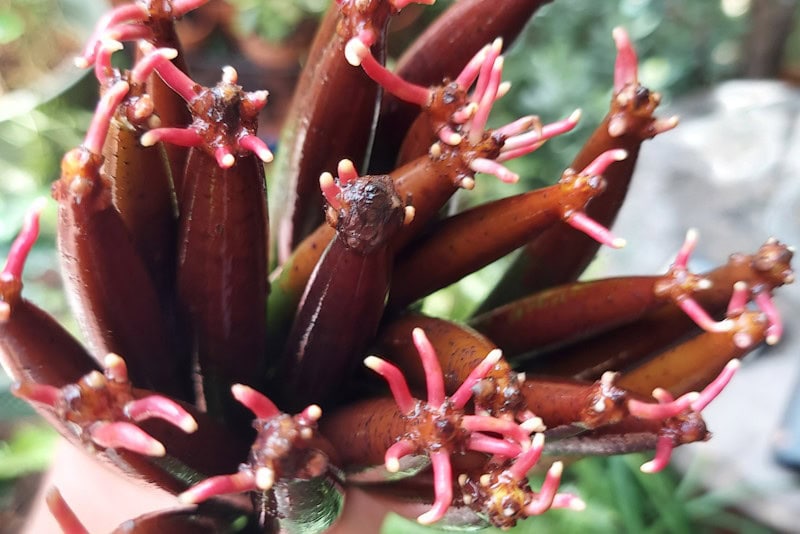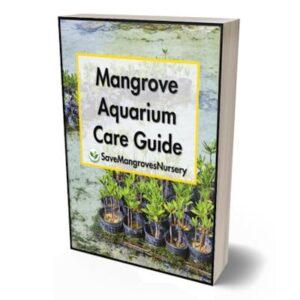
When you’re setting up a new aquarium or adding a unique touch to an existing one, mangroves can be an incredible addition. But if you’re wondering whether these versatile plants can grow without substrate, you’re not alone.
As a professional aquarium enthusiast, I’ve often been asked this question. The answer is yes—mangroves can grow without substrate, and there are even benefits to this approach.
Understanding Mangrove Growth
Mangroves are remarkable plants known for their ability to thrive in harsh coastal environments. Unlike many other aquatic plants, they don’t need substrate to anchor their roots. Mangroves naturally grow with prop roots that extend out into the water, stabilizing them and allowing them to absorb nutrients directly from their surroundings.
What Are Prop Roots?
Prop roots are the long, arching roots that extend from the trunk and branches of mangroves. These roots help the plant remain stable in soft, muddy environments and are essential for breathing and nutrient absorption.
Good Root Structure: ✅ Strong, healthy roots that are well-exposed to air and water
Bad Root Structure: ❌ Weak or overly submerged roots that lack oxygen access
🛑 Fun Fact: Did you know that mangroves can filter out salt from seawater? Their roots act like a natural desalination plant, allowing them to thrive in saltwater environments! Check out this article to discover the amazing benefits of adding mangrove plants to your tank.
Growing Mangroves Without Substrate
When growing mangroves without substrate, it’s important to mimic their natural environment as closely as possible. There are a few different methods you can use, depending on your aquarium setup.
The Floating Method
One of the most common ways to grow mangroves without substrate is by allowing them to float in the water. This method allows their prop roots to remain exposed to the air while the rest of the roots are submerged, mimicking their natural habitat.
Pros of Floating Mangroves: ✅ Natural root exposure, minimal maintenance
Cons of Floating Mangroves: ❌ Roots can become tangled, requires regular nutrient dosing
Bare-Bottom Tanks
Another effective method is to grow mangroves in a bare-bottom tank. In this setup, there’s no substrate, and the mangroves rely on their roots to absorb nutrients from the water column. This method is popular in saltwater aquariums, where substrate can sometimes interfere with water chemistry.
Good Water Conditions: ✅ Regular water changes, balanced nutrient levels
Bad Water Conditions: ❌ Poor filtration, lack of nutrient supplementation
🛑 Fun Fact: Mangroves are natural water purifiers! Their roots can absorb heavy metals and pollutants, making them great for maintaining water quality in your aquarium.
Anchoring Mangroves Without Substrate
Even without substrate, it’s crucial to keep your mangroves stable. You can anchor them using small rocks, suction cups, or even tie them to driftwood. Just be careful not to damage their delicate roots in the process.
Good Anchoring Techniques: ✅ Secure, gentle methods that don’t damage roots
Bad Anchoring Techniques: ❌ Tight bindings that restrict root growth
Adding Substrate: Pros and Cons
While mangroves don’t require substrate to grow, adding it to your aquarium can still offer some benefits.
Nutrient-Rich Substrate
If you’re growing mangroves in a freshwater or brackish tank, adding a nutrient-rich substrate can provide a steady supply of nutrients. This can help support faster growth and more robust root systems.
Pros of Using Substrate: ✅ Continuous nutrient supply, improved root stability
Cons of Using Substrate: ❌ Potential changes to water chemistry, more frequent cleaning
Aesthetic Appeal
Adding substrate can also enhance the aesthetic appeal of your aquarium. Sand, gravel, or even mud can give your tank a more natural look, which many hobbyists find desirable.
Good Aesthetic Choices: ✅ Natural-looking substrates that complement tank design
Bad Aesthetic Choices: ❌ Incompatible substrates that alter water parameters
Personal Experience: Growing Mangroves Without Substrate
In my own tanks, I’ve experimented with various setups, and I can confidently say that mangroves thrive without substrate as long as their needs are met. I remember when I first set up a bare-bottom saltwater tank and decided to try growing mangroves without any substrate.
The results were impressive!
The mangroves quickly adapted, and with regular water changes and nutrient dosing, they flourished.
One key thing I’ve learned is that while substrate can offer benefits, it’s not a necessity for mangrove health. Instead, focusing on water quality, root exposure, and proper anchoring will set your mangroves up for success.
Mangroves are incredibly adaptable plants that can thrive in a variety of aquarium setups, including those without traditional substrate. Whether you choose to let them float, anchor them, or go with a bare-bottom tank, the key is to provide an environment that meets their unique needs.
How Do I Choose My Very First Plant?
So you have learned about the incredible benefits of adding mangrove plants to your tank, but you still don’t know which exact plant to add to your specific tank size?
Don’t worry, because we’ve created an easy Step-by-Step guide to help you with your selection process.
Click the button below to find out which plant is perfect for your aquarium.

 Cart is empty
Cart is empty 
